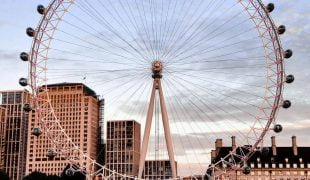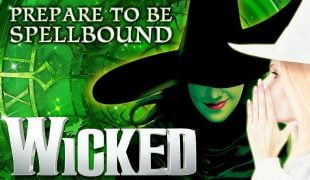Free Museums in London

There are over 200 different museums in London, ranging from the magnificent Natural History Museum in its grandeur to smaller, specialist museums, such as the British Dental Association Museum on Wimpole Road.
Most of the many available are free to enter and include free tours and events for families.
There are some fantastic museums for you to spend a day exploring.
British Museum
Even before you see all the fantastic exhibits the British Museum offers, you can’t help but be awestruck when you see its wonderful latticed steel and glass roof, created by Sir Norman Foster, a brilliant contemporary architect.
The top is almost an exhibit in itself.
Like most galleries in the museum, it is free to stroll around and gaze skywards in wonder.
Once you have finished giving the museum’s roof the attention it deserves, you can then start to peruse the 7 million artefacts relating to human culture and history.
The museum is so overflowing with exciting things to see that some can’t be displayed and are stored beneath the museum.
After its construction in 1753, the original building was used primarily to display the collections of Sir Hans Sloane, a scientist and physician of some note in his day.
It has since evolved into what it is today, and there are so many unique pieces here for you to view for free.
You can see the Rosetta Stone (a hugely significant Egyptian artefact), the Parthenon Marbles, the Mildenhall treasures and the Portland Vase, to name but a tiny fraction of what’s in store.
There is a massive array of interesting objects for you to discover, and if you get the history ‘bug’, you might want to sign up for a free talk, discussion or museum tour, many of which are available.
Nearest Tube Stations: Holborn, Tottenham Court Road, Russell Square.

Bank of England Museum
Situated inside the walls of the Bank of England, the museum plots the origins of the bank from its Royal Charter in the late 17th century right through to its present-day role as the central bank of the nation.
Inside, gold bars dating back hundreds of years and much newer additions of coins and banknotes.
There are also several ceremonial muskets and pikes, which are said to be there to defend the bank, but in truth, more than likely aren’t working models.
The bank’s museum also has a collection of Roman mosaics and pottery, discovered at the site when it was rebuilt in 1930 and several historical documents relating to George Washington, Lord Horatio Nelson and the Duchess of Marlborough, a French-American aristocrat and socialite.
Nearest Tube Stations: Bank, Moorgate, Monument, Cannon St, Mansion House

The British Library
This colossal library contains over 150 million pieces.
It carries a copy of every work published in the UK and Ireland, significant works of art by artists such as Paolozzi and Gormley and a raft of historical artefacts, such as the Gutenberg Bible and the Magna Carta.
So there is a lot packed under the roof of the British Library.
If you’re just down in London for the day, you should consider one of the museum’s many guided tours, as you may not have time to look at everything on your own.
Not surprising when you consider that the building the British Library sits in is the most significant public building constructed in the UK in the entire 20th century.
Whilst the museum has an enormous amount to offer the average casual browser, additional exhibitions, poetry readings, films and events are held there, most of which won’t cost you anything to attend.
If you wish to take a guided tour, you will learn so much about this great library, as the guides know their stuff!
There are so many books here that it would be easy to be overwhelmed by it all, but a good guide will point towards major literary works without you having to put too much legwork in.
In addition, they’ll point out essential items, such as the world’s oldest surviving book and the remaining edition of Beowulf.
There is also a three-storey glass Tower annexe called the King’s library, and it forms the centrepiece of the museum, both historically and architecturally.
Containing more than 65,000 volumes in print, King George III’s library is there to be explored…and all for free.
Just allow yourself enough time to see it all.
Nearest Tube Stations: Euston, King’s Cross

The Imperial War Museum
Occupying what was once the home of the infamous ‘Bethlehem Hospital for the Insane’, otherwise known as ‘Bedlam’, the Imperial War Museum is dedicated to remembering the brave souls involved in the significant conflict in the 20th century.
Created in 1917, it contains an exciting showcase of the weapons and vehicles used in war and details studies of the far-reaching social effects that conflict brings.
From the Polaris missile to the Nazi V2 Rocket, you’ll see all aspects of war covered at the Imperial War Museum, even getting a feel of what life was like in the trenches via the ‘Walk-through’ life-like recreation of the Somme.
Both World Wars are recorded in poignant displays of poetry and painting from Wilfred Owen to Sasson and accurate reconstruction of an air raid shelter during the Blitz.
Every effort is made to convey the sounds, sights and smells of war to bring it into vivid reality for the viewer.
More than 30,000 posters and 15,000 paintings are going into making it one of the most fantastic museum experiences in London.
Nearest Tube Station: Lambeth North

Museum of London
Suppose you want to learn about the very origins of London, from prehistoric times to the modern era.
In that case, the Museum of London will give you everything you need to experience an authentic flavour of London life through the ages.
Housing more than a million exciting objects, many of which were found at city renovation works and archaeological digs, you’ll leave feeling that little bit closer to the city’s people, past and present.
Ordered chronologically, the museum takes you through the different eras of London, from Roman belt buckles and brooches, through the medieval period to the Victorian era and its many glassware items.
You’ll even see the dreadful sight of skulls thought to belong to those massacred by Queen Boudica, the leader of the Celts and the footwear worn by the Duke of Wellington…the very first example of the Wellington Boot!
Whether you want to know more about parliament or the plight of the Suffragettes, you’ll find everything you need to know right here.
Nearest Tube Station: Barbican, St Paul’

National Maritime Museum
Situated in the very centre of Greenwich, the National Maritime Museum chronicles the history of Britain and its long association with the sea.
Housing important relics and records of events past, the museum is a fantastic way to learn more.
The assembled collection started in 1823 when it carried the name ‘The National Gallery of Naval Art’ and displayed more than 300 fascinating paintings, artefacts and portraits.
The building was once used as a hospital school and insane asylum, and it commands beautiful views of the Thames from its lofty position.
Since Neptune Court was added, the museum has had many galleries that tackle topics as wide-ranging as Nelson, ecology, exploration and naval battles.
Museum visitors get to go at gunnery and signalling or wander the museum’s corridors looking at the majesty and pomp of Britain at sea through the ages via photography, paintings and poetry.
The museum is free to enter.
However, you may pay to get it and see the inside of the Cutty Sark or buy some tickets to an exclusive exhibition.
Queen’s House
Clean, classical and bright, though a little modest when compared to other royal residences, the Queen’s House is a Palladian Villa adorned with majestic colonnades.
It may not be the largest or most splendid of all the buildings in central London, but its diminutive stature belies its massive significance in history.
Built a little over 400 years ago for the wife of King James I, Anne of Denmark, the Queen’s House was the first building seen in England with a neo-classical design.
Originally intended to be used as a hunting lodge, it also was purposed as a bridge covering the public highway to Deptford, a move which saw the park split in two.
The Jacobean-styled house wasn’t completed until 1635 when it was taken over by Charles I and his wife, Henrietta Maria.
However, the house stood tall during the most turbulent times, with Oliver Cromwell later reclaiming the residence and its numerous treasures.
The National Maritime Museum now uses the building to display paintings of notable seamen throughout history and the historic port of Greenwich.
The house is also the location of one of the first spiral staircases in Britain, with its beautifully ornate ‘Tulip Staircase’ from the Stuart Period.
Entrance to the Queen’s House is free.
Royal Observatory
Built by Sir Christopher Wren in the latter part of the 17th century, the museum of time and space is located on the precise spot of the Greenwich Meridian (From where we get the term GMT or Greenwich Mean Time) and the geographical site of 0 Longitude.
So if you pass at the right time, you may even see the ‘time ball’ drop at 1 pm daily.
The Royal Observatory and the National Maritime Museum have accumulated more than 2,000,000 seas, ship and astronomy-related objects since it opened in 1937, and every effort is made to display them in a way that helps visitors understand and feel what life must have been like at sea, all those years ago.
From the famous Harrison Timekeepers to the intricate navigation and telescopic equipment in Wren’s Octagon Room, you’re likely to be mesmerised by the craftsmanship and authenticity of all you see.
Ten years ago, in 2007, the Peter Harrison Planetarium was opened, and it was said to have cost some £15m to create its perfect cone-shaped appearance.
This cutting-edge facility can seat 120 and replace the old and obsolete planetarium to the South.
Should you wish to visit the Planetarium, there will be a small charge, but the rest of the Observatory’s centre for astronomy is entirely free.
Nearest Tube Station: New Cross

The Natural History Museum
As you enter the Natural History Museum, you are immediately presented with the massive skeleton of a Blue Whale suspended high above the marble floors.
It recently replaced the diplodocus that graced Hintze Hall for the previous 35 years.
This fantastic spectacle is just one of several life-size exhibits of dinosaurs and giant beasts inside.
This interactive and modern museum is home to over 70 million items about the earth, science and life, as it has existed since dawn.
Exhibits inside include a diverse range of subjects and species, stimulating the mind and making you realise that you’re part of something much larger than yourself.
If you see nothing else at the museum, you must visit the ‘evolution of the species’ exhibit and ‘The Power Within’, which provides insight into the natural phenomenon that is the earthquake.
Also, ‘The Vault’ is a place to see a fascinating collection of rare stones, gems and meteorites, some of which are extremely valuable.
The museum runs several free demonstrations and lectures, and during the summer months, you can access the peaceful wildlife garden (Between April and October) for no charge.
Most of what you see in the Natural History Museum is free, but you should check before entering.
Nearest Tube Stations: South Kensington, Gloucester Road

The Science Museum
Probably the most interactive museum in London, The Science museum displays past and present innovations that have come to be due to our growing understanding of the world of science.
You’ll find much to see and enjoy, from industry to medicine to space travel.
In the 19th century, Prince Albert was obsessed with promoting knowledge regarding industrial technology, and part of his vision led to the establishment of the Museum of Science.
Created using funds raised by the Great Exhibition of 1851, it contains some 300,000 objects that span the entire timeline of western science.
The interactive displays you’ll find inside were designed to encourage emotional investment from all ages, children and adults.
A popular attraction inside is the Launchpad Gallery, which teaches those visiting about the laws of force and motion.
The great thing is that they learn through playing with the exhibits, which is always the best way to be educated.
Designed for children between the ages of 8-14 years, there is an almost limitless supply of things for them to do whilst they have their minds stimulated.
Want to find out how an aircraft stays in the air or what friction is?
Then this is the place to come – and it’s all free.

Sir John Soane’s Museum
Situated on Lincoln’s Inn Fields, this strange but wonderful house is an Aladdin’s cave of treasures and artefacts.
Inside its walls, you will find more than 30,000 items of historical interest, from architectural drawings to victorian figurines.
Artistic work by Canaletto, Piranesi and Turner all feature prominently, with canvasses from ‘A Rake’s Progress’ by William Hogarth taking centre stage.
Each area inside the museum has its distinct identity, and each complements the other ideally – from the Gothic Library to the Roman-oriented study, there is so much to explore.
One particular piece we recommend looking out for is Seti’s Sarcophagus, dating back almost 2,500 years.
Nearest Tube Station: Holborn, Chancery Lane

The Victoria and Albert Museum
This museum boasts more than 4 million objects to view and upwards of 145 galleries for you to explore.
The Victoria and Albert museum is arguably the most influential in London regarding the world’s decorative and applied arts.
Created in the mid-1800s to educate and encourage British design and manufacturing, it provides a home for a mesmerising collection of Chinese, Korean, Japanese, Indian and European glassware, ceramics, metalwork, sculpture, furniture, weapons and armoury.
It is also home to the National Collection of the Art of Photography, representing the oldest collection.
In addition, those visiting the museum can get close to the fascinating clothing collection from across the ages.
The gallery within is frequently named the most notable collection of Italian Renaissance work outside of Italy.
As you venture further, there is also an ode to British design from Morris, Chippendale, Mackintosh and Adam.
Other notable attractions include James II’s wedding suit and the Great Bed of Ward, which Shakespeare mentions in ‘Twelfth Night’.
The house’s architecture is a combination of Edwardian and Victorian aesthetics, with high glass roofs and elevated walkways.
Nearest Tube Station: South Kensington

The Design Museum
Located in Shad Thames just a short time ago, the Design Museum has moved to Kensington High Street and, more specifically, to the former Commonwealth Institute Building, which is around three times bigger than its former home.
The new building, which is Grade II listed, was reimagined by John Pawson, a contemporary architect leaning towards minimalism.
The building now includes a 202-seat auditorium, a Foundation for learning sponsored by Swarovski and a gallery for the artistic work that permanently resides there.
The collection includes the innovative Boilerhouse Project and notable designs that have helped to shape the modern world as we know it.
Created in 1982, it consists of all aspects of architecture, design, transport and digital media.
In addition, the gallery features temporary and permanent exhibits that trace the history and origins of various developments in design, including contemporary and mass-produced work.
Like many others, this is free of charge and yours to enjoy.
Guoman Hotels in London
An exclusive collection of four and five-star hotels in London, nestled in some of the city’s most stellar locations.
Great Cumberland Place, The Royal Horseguards Hotel, and The Tower Hotel.
Each has its own character, identity and style – from exquisite elegance at the Royal Horseguards, to contemporary comfort at Great Cumberland Place.






